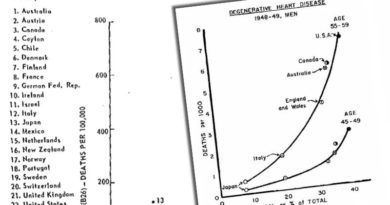High protein diets and heart failure
Many thanks to Dr Peter Brukner for today’s topic. There were a few to choose from last week, but Peter asked if I could look at this one and so I have…
On May 30th 2018, there were some pretty scary headlines: “High protein diets like Atkin's may increase risk of heart failure, finds study” (Ref 1). Peter had seen the article on an Australian doctor site where the headline was: “Why middle-aged men should go easy on this diet”, with a picture of a big slab of steak (Ref 2). Science Daily, as one might expect, were less sensational (but still wrong). Their headline was “High protein diet associated with small increased heart failure risk in middle-aged men” (Ref 3).
Let’s take a look at the study to see if there is anything that anyone might need to worry about…
The study
The original paper can be seen here (the full PDF is currently available) (Ref 4). The paper emanates from an ongoing study called “The Kuopio Ischaemic Heart Disease Risk Factor Study.” This is a Finnish study, which included 2,441 men who were aged 42 to 62 years when they were recruited into the study between 1984 and 1989. The men have been followed since the baseline assessment for an average of 22 years. This is what we call a prospective cohort study, therefore. During the 22 years of follow-up there were 334 cases of Heart Failure (HF). Immediately we know that these results are tiny. Immediately all women can ignore any findings. Arguably any non-Finnish men can ignore anything too.
The paper is long (36 pages), but the summary (abstract) of the paper on the first page helpfully tells us that the entire paper can be ignored. In the “Methods and Results” of the abstract, three ‘findings’ are presented:
1) “Higher intake of total protein indicated a trend toward increased risk of HF [Heart Failure] (Hazard Ratio in the highest versus lowest quartile=1.33; 95% confidence interval: 0.95–1.85; P-trend=0.05).”
2) “The hazard ratio in the highest versus lowest quartile was 1.43 (95% confidence interval: 1.00–2.03; P-trend=0.07) for total animal protein and…
3) …1.17 (95% confidence interval: 0.72–1.91;P-trend=0.35) for total plant protein.”
Regular readers of this newsletter know that any confidence interval that includes 1.0 is not statistically significant. It could have happened by chance. It is not a finding of an effect.
Hence all of these ‘findings’ are not findings!
I came across a fun blog recently, by someone who writes as “academic obscura”, which has captured almost 500 phrases that researchers use to try to imply that they have found a significant result when they haven’t (Ref 5). The Finnish paper uses a number of the classics on the list: “a trend toward increase risk…” In the conclusion of the abstract, the researchers tried a different expression: ”marginally associated with increased risk…” The main body of the paper uses the term “borderline significant.” As the blog explains, use whatever language you like, but non-significant is non-significant. Be a proper researcher and admit it.
We could ignore the rest of the whole paper, but let’s see if there is anything else worth noting…
The rest of this article is available to site subscribers, who get access to all articles plus a weekly newsletter.
To continue reading, please login below or sign up for a subscription. Thank you.




